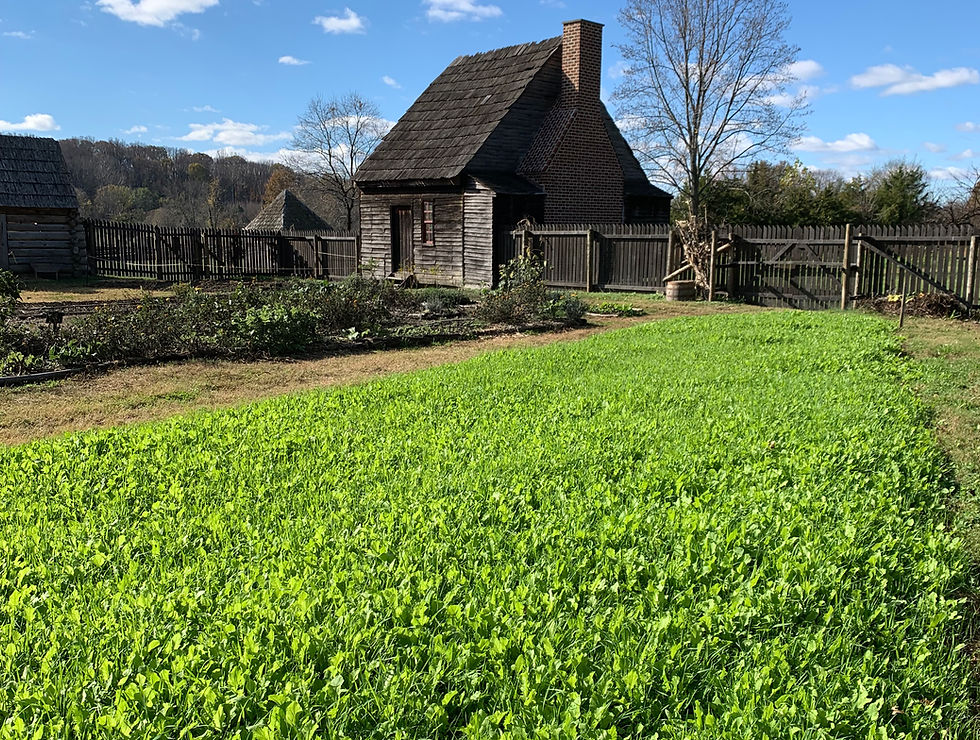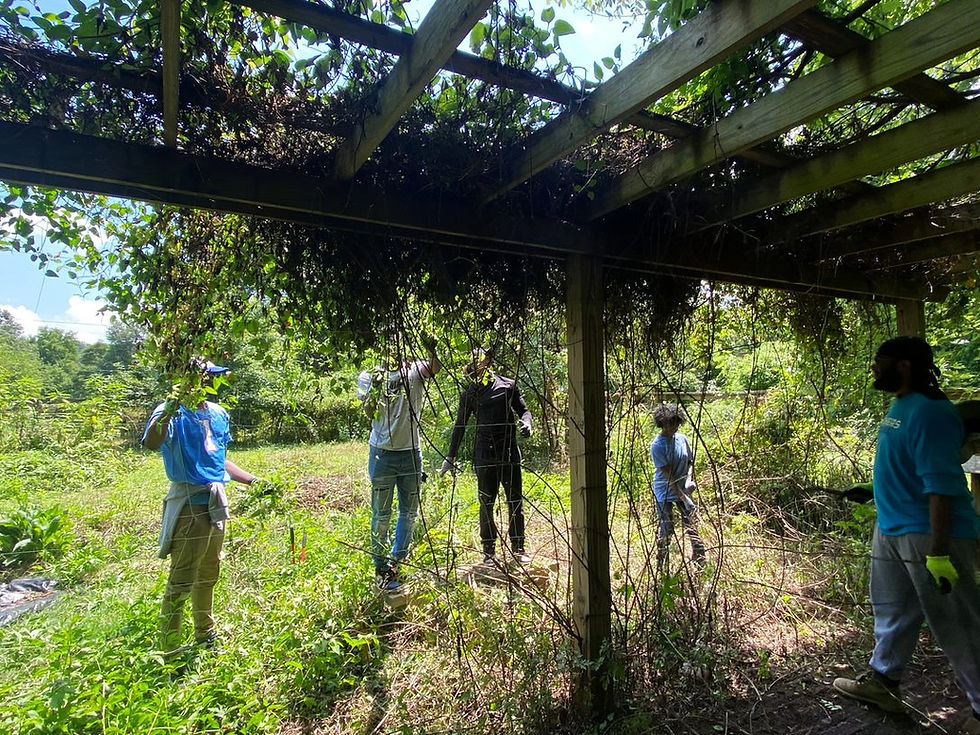Field Notes: Volume 16, Number 10
- Accokeek Foundation

- Jul 8, 2011
- 3 min read

This Week’s Harvest
Cilantro
Onions
Beets
Beans
Chard
Fennel
Tomatoes
While we strive for consistency at the Ecosystem Farm, we ask that our SHAREholders please keep in mind that Friday and Tuesday harvests will not always be the same.
For your convenience, an exact harvest list will be posted in the packing shed.
Last week, we bemoaned the lack of rain. This week, with the help of two showers, we received our asked-for half-inch. We are grateful, even as we wish for a bit more. Although everything on the farm has continued to grow—a lot—the heat has been high this week. The farm staff has become accustomed to the hot and humid weather that calls for a straw hat and lightweight layers, but it can still be a shock to those who visit the site, like the small group of high-school students who volunteered at the farm for the first time this week. But even as these students protest the heat, it is a pleasure having those who are interested in the outdoors visit the site to experience the natural world.
Indeed, the Ecosystem Farm continues to be just that: a miniature ecosystem filled with an assortment of plant, insect, and animal life. Some new insects have been spotted of late, including the cicada killer, a large, ground-dwelling wasp that feeds cicadas to its young. And, as much as we might dislike this fact, our tomatoes continue to feed a handful of persistent birds in addition to our regular SHAREholders.
Reminder
If you are splitting a SHARE this season, please remember to divide just one box of produce between yourself and the person(s) you are sharing with each week.
Up Close With Fennel
This week marks the Ecosystem Farm’s first harvest of fennel, a bright green vegetable with a bulb-like base and feathery leaves similar to those of dill. The aromatic plant, which smells of licorice, is often called the Italian “finocchio.” Indeed, it is a staple ingredient in Italian (and German) salads.
Fennel has both culinary and medicinal uses for humans, and is an important food source for several species of butterfly, including the anise swallowtail. Those cultivars with a large bulb are best when it comes to cooking. Delicate fennel leaves can be used as an herb to compliment egg and fish dishes; the bulb can be eaten raw or cooked. Combine sliced fennel with avocados and oranges for a raw salad; use it as a substitute for celery in salads, soups, and stews; or try it sauteed, braised, roasted, or grilled. Store fresh fennel in the crisper. Fennel can be frozen after first being blanched, but it sometimes loses flavor during this process.
Below, photos from this week on the Ecosystem Farm. Click images to enlarge, or view them on Flickr.
This Week’s Recipe: Roasted Fennel
Recipe from Simply Recipes
Ingredients:
2 fennel bulbs, stalks cut off, bulbs halved lengthwise, then cut lengthwise in 1-inch pieces
olive oil
balsamic vinegar
Directions:
Preheat oven to 400 degrees F. Rub just enough olive oil over the fennel to coat. Sprinkle on balsamic vinegar, also to coat. Place fennel on a foil-lined baking dish and roast for 30 to 40 minutes, or until the fennel has cooked through and begun to caramelize.
Upcoming Events
Sustainable Table: Tuesday, July 12, 2011, 6 to 7:30 p.m., Education Center: It’s one thing to purchase produce that’s in season, and quite another to cook it. Sustainable Table is a monthly cooking course that demonstrates how to use in-season fruits, vegetables, and herbs to create healthful, wholesome, and delicious meals. Each class will spotlight one well-loved fruit or vegetable standard and one unusual item. Participants will receive printed recipes to take home.
Ecosystem Farm Volunteer Day: Thursday, July 14, 2011 (Recurring, Second and Fourth Thursdays), 1 to 4 p.m., Ecosystem Farm: Volunteers will join the farm crew in their work and, in the process, learn about organic and sustainable agricultural practices. Please wear appropriate clothing, including long pants, sturdy shoes or boots, sunscreen, and/or a hat. Bring snacks and a refillable water bottle. Work will vary depending on the weather.







